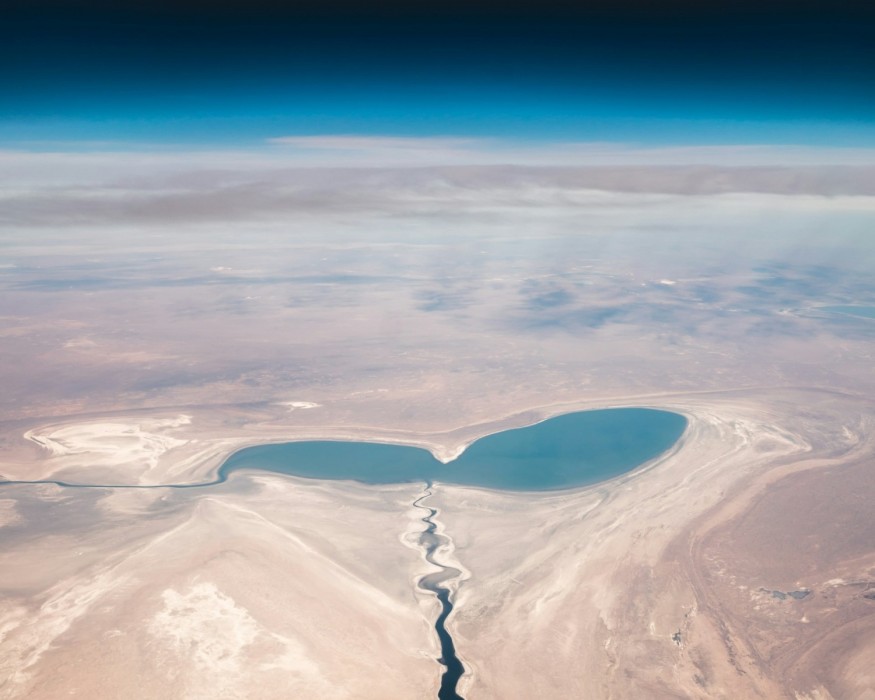
As the climate emergency rages on, well-calibrated partnerships can help unlock the vast economic and environmental benefits of restorative projects in the Aral Sea—and the Eurasia region.
Across Central Asia and beyond, desertification is tightening its grip on both people and the planet. The Aral Sea serves as a stark reminder of the tragic consequences of manmade climate crises, yet it also stands as a pillar of hope for large-scale restoration efforts.
Once the fourth-largest lake in the world, the Aral Sea is now known as one of the biggest ecological disasters in modern history. Intensive cotton irrigation and agriculture systems, particularly during the Soviet era, caused its water levels to plummet.
As a result, severe salination and widespread desertification swept across Kazakh and Uzbek terrains. This environmental catastrophe has led to a barren landscape, toxic dust storms, and a devastating loss of biodiversity.
According to the UN Convention to Combat Desertification (UNCCD), the Aral Sea has shrunk by a staggering 90% since the 1960s. This caused the shoreline to recede by miles, splitting the sea into two distinct bodies: the Large Aral and the Small Aral. But beyond plummeting water levels, the ravaging impact of desertification continues to take hold of thousands of lives and livelihoods in surrounding communities.
The drastic salinisation and desertification of the Aral Sea, now called Aralkum, left a desiccated landscape exposing residents to agricultural pollutants. This heightened health risks due to airborne toxins and contaminated food and water.
Wealthy harbour cities like Aralsk and Muynaq were left far from the new shoreline, depriving residents of reliable income. The once-thriving fishing industry, which harvested 48,000 tons of fish annually, ceased in the 1980s, leading to the closure of processing facilities and soaring unemployment rates.
As a result, emigration figures surged, with Aralsk regionosing 10,400 people between 2001 and 2011. The region that was once lauded for its natural abundance became an inhospitable remnant of an anthropogenic environmental disaster.
Amid this environmental crisis, a glimmer of hope emerged with the construction of the Kok-Aral Dam and Dike, often dubbed the 'Dam of Life.' Completed in 2005, the project was a joint effort involving the Kazakh government, the World Bank, and Russian construction firms.
The primary goal was to restore the brackish waters of the Small Aral Sea. Within just six months, the impact was substantial, as salinity levels reportedly decreased, and water levels rose by over three metres. Yet, evidence continued to show that the lake and its surrounding areas were degrading at a much faster rate than restorative projects could keep up with.
As world leaders raise the alarm for a global climate emergency, actors across the public and private sectors are joining forces and stepping up to the challenge together.
According to data from the UNCCD, Central Asian countries are leading the way in creating 'bright spots'—initiatives that effectively combat desertification, land degradation, and drought. For instance, in 2023, it was reported that Kazakhstan increased its irrigated lands by 40%, expanding the total irrigated area to 2 million hectares.
Meanwhile, the International Fund for Saving the Aral Sea (IFAS) has longstanding projects with organisations such as USAID and UNDP that focus on managing desertification and accelerating adaptive and mitigation measures in the Aral basin and its surrounding areas.
IFAS has also gone to show the resounding impact of private sector collaboration under the Aral Oasis project in close partnership with Freedom Holding Corp. (FRHC).
The Aral Oasis Project aims to plant drought-resistant trees across the decertified seabed, transforming barren landscapes into a 'green oasis.' Launched in 2023, this initiative has already planted 150 hectares of saxaul trees, with plans to add 350 hectares of black saxaul and other resilient plants in 2024–2025.
This involves planting various species of trees and shrubs, providing irrigation, and constructing the first well in the oasis with a $250,000 investment.
Timur Turlov, CEO of Freedom Holding Corp, recently commented on the profound impact of Aral Sea restoration:
"The point of no return has long passed for the Aral Sea and while we cannot reverse past errors, we do have the power to significantly slow down desertification, reduce dust storms, and limit the devastating impact of salt and other pollutants from the drying seabed, which are carried by the wind for thousands of square kilometers across the entire region. We have the ability to make the lives of residents in nearby villages safer and more comfortable."
FRHC, recognised as a key proponent of the ESG agenda in Kazakhstan's financial sector, established the Corporate Fund "Freedom Shapagat," in August 2023 to coordinate ESG initiatives.
Currently, through the collaboration of Freedom Shapagat, Qazaq Carbon, and Plan Vivo, the project aims for Carbon Certification in May 2025 after certifying three green belts in the region. Future plans include agroforestry practices, focusing on high-quality watermelon and melon production. Kyzylorda University has also dedicated a hectare of land to cultivating halophytes.
Besides, the fund is developing green belts near rural settlements of the Aral Sea, covering 3,000 hectares, and restoring pastures on 1,000 hectares to support local ecosystems and agriculture.
The desiccation of the Aral Sea stands as a poignant symbol of environmental mismanagement from the 1950s. Though the sea may never fully return to its former glory, restoration efforts led by the Kazakh government and companies like Freedom Holding Corp. provide a glimmer of hope for the region's future, nurturing a promise of renewal, investment, and innovation after a long and protracted dry spell.
© 2025 NatureWorldNews.com All rights reserved. Do not reproduce without permission.





